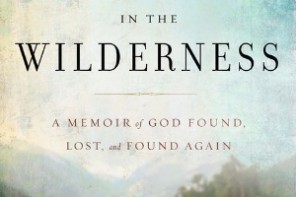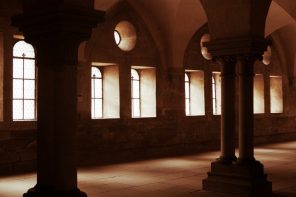On December 18, 1963, while visiting the campus of Western Michigan University, the Reverend Dr. Martin Luther King, Jr. spoke these famous words: “We must face the fact that in America, the church is still the most segregated major institution in America. At 11:00 on Sunday morning when we stand and sing and Christ has no east or west, we stand at the most segregated hour in this nation. This is tragic. Nobody of honesty can overlook this.”[1]
King considered this reality to be tragic because he believed the Christian church to be the “moral guardian” of society and that she was failing in her duties. By this, King is not suggesting the church is the preserver of cultural mores. Far from it. The church during the Civil Rights era – and arguably in our own day – was overly conservative on issues of race, being too slow to change thereby preserving (either tacitly or actively) systems of segregation.
Instead, by “moral guardian” King means that part of the church’s unique responsibility in the world is to get its own house in order, to “preach brotherhood and make it a reality in its own body” in order to be a clear light that can transform a fragmented world.[2] As he writes in his “Letter from a Birmingham Jail,” the church is not to be a thermometer that records the ideas of popular opinion but is to be a thermostat that that transforms it.[3]
Much is at stake and it’s more than just the integrity of the church.
In his Nobel Prize acceptance speech, Alexandr Solzhenitsyn discusses the power of beauty. He wrestles with Dostoyevsky’s enigmatic phrase “beauty will save the world.” Assuming the integrated unity of Truth, Goodness and Beauty, Solzhenitsyn alludes to the possibility that when Truth and Goodness are denied a space at the counter “…then perhaps the fantastic, unpredictable, unexpected stems of Beauty will push through and soar to that very same place” thereby fulfilling the work of all three.[4]
Discussing the ancient trinity of Truth, Goodness and Beauty, Peter Kreeft also picks up on the power and persuasiveness of beauty. Focusing especially on the connection between goodness and beauty, Kreeft argues that “the most beautiful thing in the world is a saint, and [it is also] the most powerful argument…”[5] I would make a slight correction: not the saint, but the saints are the most beautiful thing in the world. It is the community of saints, the church that is the most beautiful thing. Or, at least it ought to be.
By and large, we inhabit a post-Christian society that doesn’t take the church seriously (unless it’s courting Christians for votes in an upcoming election). The truth claims of the church are ignored and the goodness of the church is called into question. Offering the world a beautiful picture of a unified church, a church making miraculous progress in racial reconciliation may be the only thing that can sneak past the watchful dragons (to borrow an idea from C.S. Lewis) and rouse the world from its slumber.
To be clear: this is not a clever marketing strategy. It is simply surrendering to the powerful, unifying effect of the gospel in the sight of and for the sake of the fragmented world.
The gospel, the proclamation that Jesus is King, is a unifying force.[6] From the founding of the church to its fulfillment, citizenship in the Kingdom of God transcends every and any other barrier and allegiance, overcoming division and estrangement with harmony and brotherhood. We see this in Acts 2:1-13 on the day of Pentecost, the reversal of Babel (Gen 11:1-9). Rather than scattering people of one nation and language in order to confound their mission, God unites people “from every nation under heaven” via many languages for a common mission.
In fact, the reason why Christians are called “Christians” is because the gospel did a new thing in the city of Antioch. In The Rise of Christianity, Rodney Stark sketches a portrait of Antioch as a city plagued by squalor, disease, natural disaster, crime and intense ethnic hostility. Antioch was a striking example of ethnic fragmentation as the city was divided into eighteen separate ethnic quarters.[7] Antioch was the quintessential segregated city.
And yet, in Acts 11:26 we read that Antioch is the first place where disciples of Jesus were called Christians. This is a result, at least in part, of the gospel breaking down walls of ethnic division in the city. The gospel did a new thing. It overcame extreme ethnic tension and unified diverse groups of people into citizens of the Kingdom of God. The world hadn’t seen anything like it. They required a new name: Christians. It would seem that 11 o’clock Sunday morning was the most integrated hour in Antioch.
The church has made marginal progress since King spoke those words on a cold night in Kalamazoo.[8] Nevertheless, the church is still confronted with a credibility problem. Segregation in the church lends credence to the indifference towards the truth claims of the church and the skepticism of its goodness. Confronting the problem of credibility, Lesslie Newbigin asked this simple question: “How is it possible that the gospel should be credible?” He suggests “that the only answer, the only hermeneutic of the gospel, is a congregation of men and women who believe it and live by it.”[9]
One dynamic of walking the talk is the pursuit of racial reconciliation. In other words, racial reconciliation is not only a natural result of the unifying power of the gospel, it’s also necessary for the sake of the church’s mission. N.T. Wright argues that a unified church is meant to be the central symbol of both God and the gospel to the world. The church, “the ekklēsia…is nothing short of a new version of the human race.”[10] Only the integration into a new human race as citizens of the Kingdom of God is able to overcome the entrenched hostility of racial, ethnic and socio-economic fragmentation. The credibility of the gospel depends upon it.
And so, our generation must actively adjust our trajectory to aim at the future and final vision of God’s people (Rev 7:9-12). This calls for progressively embodying, more and more, the great, uncountable multitude – people from every nation, all tribes and peoples and languages worshipping the Lamb that was slain. This is the most beautiful thing. Perhaps it is only this beauty that can actually save the world.
[1] Rev. Dr. Martin Luther King, Jr. “Western Michigan University Speech,” December 18, 1963. http://www.wmich.edu/sites/default/files/attachments/MLK.pdf, 22
[2] ibid.
[3] Rev. Dr. Martin Luther King, Jr., “Letter from Birmingham Jail,” April 16, 1963. https://www.africa.upenn.edu/Articles_Gen/Letter_Birmingham.html
[4] Alexsandr Solzhenitsyn, “Nobel Lecture in Literature – 1970,” http://www.nobelprize.org/nobel_prizes/literature/laureates/1970/solzhenitsyn-lecture.html
[5] Peter Kreeft, “Lewis’ Philosophy of Truth, Goodness and Beauty,” in C.S. Lewis as Philosopher, eds. David J. Baggett, Gary R. Habermas and Jerry L. Walls (Downers Grove: IVP Academic, 2008), 34.
[6] For a concise explanation of what the “gospel” means from the perspective of biblical theology see “Herald of the King,” Ch. 3 of N.T. Wright’s What Saint Paul Really Said (Grand Rapids: Wm. B. Eerdmans, 2014).
[7] Rodney Stark, The Rise of Christianity (Princeton: Princeton University Press, 1996),157-158. Stark devotes an entire chapter to Antioch as a case-study, see Ch. 7 “Urban Chaos and Crisis: The Case of Antioch.”
[8] According to the Pew Research Center, the degree of racial segregation remains high though there is a slow trend towards more diversity in churches. See Pew Research.There is still much progress to be made. According to the findings of the most recent study on the racial composition of churches published in January 2015, more than 8 out of 10 churches are comprised predominantly of one racial group and most people think their church has done enough to become more diverse. Access summary of findings here.
[9] Lesslie Newbigin, The Gospel in a Pluralist Society, (Grand Rapids: Wm. B. Eerdmans, 1989), 227.
[10] N.T. Wright, Paul and the Faithfulness of God (Minneapolis: Fortress Press, 2013), 396.





